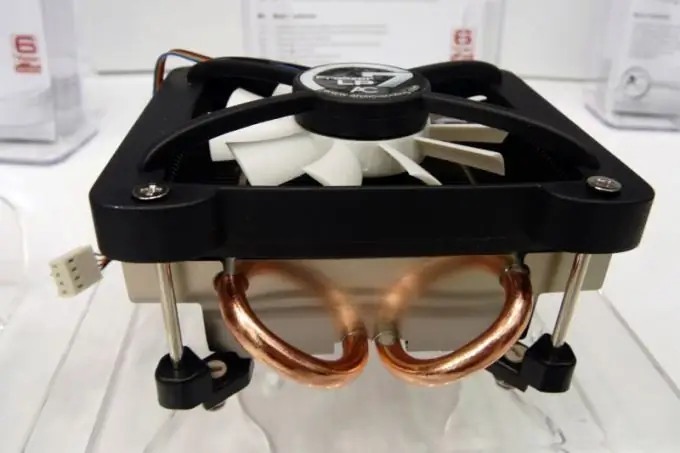Timely maintenance of the equipment installed in the system unit is necessary to prevent damage to it. Particular attention should be paid to fans designed to cool the CPU and graphics card.

Necessary
- - crosshead screwdriver;
- - grease.
Instructions
Step 1
Install SpeedFan software. Run it and look at the readings of the temperature sensors. If the temperature of the video card exceeds the permissible value, then clean and lubricate the desired fan.
Step 2
Disconnect the computer from the AC power supply and remove the wall of the system unit. Disconnect the video card from the motherboard by first disconnecting the cable that goes to the monitor from it. Now carefully remove the fan from the video adapter. This usually requires unscrewing several screws. Remember to unplug the power cord.
Step 3
Remove the sticker from the central part of the cooler blades. If you find a small hole under it, then drip a small amount of machine oil or other grease into it. Never use edible vegetable oil for this purpose. It crystallizes when heated, which can damage the cooler. Now move the blades up and down to distribute the grease evenly.
Step 4
If there is a plastic cover under the sticker, remove it. Using tweezers or a thin screwdriver, remove the plastic washer and rubber seal from the hole. Remove the fan blades from the axle. Put a little grease in the hole and apply it to the pivot pin. Now wipe the dust off the cooler blades. To do this, use a cotton swab or rag soaked in alcohol solution. Place the blades on the pivot. Assemble the cooler and install it on the graphics card. Plug in the power cable.
Step 5
Turn on your computer again and run the Speed Fan utility. Adjust the rotational speed of the cooler blades to ensure optimal cooling for your graphics card. If the temperature is still higher than the norm, then replace the fan with a more powerful analogue. Make sure that the fan installed on the case of the system unit is working properly.






